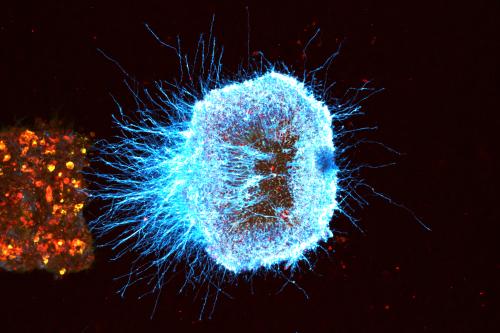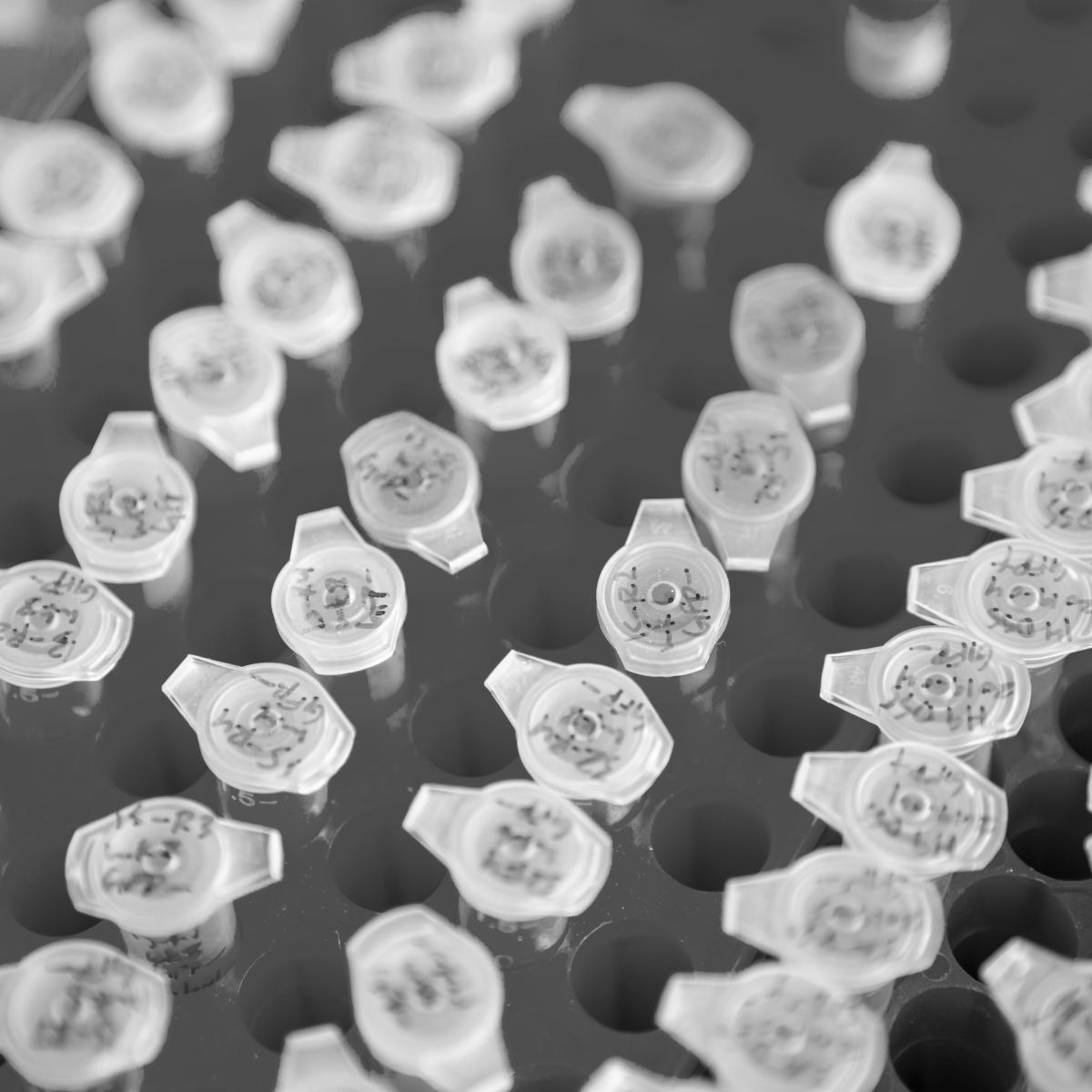

A type of immunotherapy A type of treatment that uses the body's own immune system to fight cancer, infections and other diseases. This approach has revolutionized cancer care and is also being applied in experimental treatments for HIV, lupus and other conditions. immunotherapy A type of treatment that uses the body's own immune system to fight cancer, infections and other diseases. This approach has revolutionized cancer care and is also being applied in experimental treatments for HIV, lupus and other conditions. in which a patient’s own immune cells, called T cells White blood cells that naturally fight against disease-causing invaders using specialized molecules, called receptors, on their cell surface. The receptors help T cells seek out and destroy virus-infected cells or cancer cells. T cells White blood cells that naturally fight against disease-causing invaders using specialized molecules, called receptors, on their cell surface. The receptors help T cells seek out and destroy virus-infected cells or cancer cells., are programmed to attack tumor cells. Doctors do this by applying a special cancer-recognizing receptor, referred to as a chimeric antigen receptor, or CAR, to each T cell using gene therapy A technique that uses a gene or gene(s) to prevent, treat or cure a disease or disorder. Most gene therapies work by adding a healthy version of a gene to replace one that is defective or missing into the genome of particular cells. Some of these therapies use viral vectors to deliver genes into target cells. gene therapy A technique that uses a gene or gene(s) to prevent, treat or cure a disease or disorder. Most gene therapies work by adding a healthy version of a gene to replace one that is defective or missing into the genome of particular cells. Some of these therapies use viral vectors to deliver genes into target cells.. The cells are then reintroduced to the patient by infusion.
Tissue-specific stem cells Mature stem cells that are found in many adult organs and tissues (such as the brain and muscles). Unlike pluripotent stem cells, they can only produce the cell types found in the organ or tissue they inhabit. They're responsible for replacing cells that have been lost due to natural wear and tear, injury and illness throughout life; however, their ability to do so decreases with age. Tissue-specific stem cells Mature stem cells that are found in many adult organs and tissues (such as the brain and muscles). Unlike pluripotent stem cells, they can only produce the cell types found in the organ or tissue they inhabit. They're responsible for replacing cells that have been lost due to natural wear and tear, injury and illness throughout life; however, their ability to do so decreases with age. found in the heart that are capable of limited self-renewal When stem cells self-renew, they divide to make identical copies of themselves. self-renewal When stem cells self-renew, they divide to make identical copies of themselves. and differentiation The process by which stem cells transform into specific, specialized cell types with distinct functions and features. differentiation The process by which stem cells transform into specific, specialized cell types with distinct functions and features. into heart muscle cells and the cells that make up the interior lining of blood vessels. These cells are found in very small numbers in the adult body and cannot currently be produced in large enough quantities in the lab to be useful in regenerative medicine A field focused on developing and applying new therapies and techniques to repair, replace or regenerate tissues and organs and restore function that has been lost due to aging, disease, injury or genetic defects. regenerative medicine A field focused on developing and applying new therapies and techniques to repair, replace or regenerate tissues and organs and restore function that has been lost due to aging, disease, injury or genetic defects. applications.
The crucial process by which undifferentiated cells receive molecular signals and genetic cues that guide them towards developing into specific cell types with distinct functions. This process is essential for the formation of various tissues and organs during embryonic development and plays a role in tissue regeneration in adults.
The process of altering histone proteins or DNA Short for deoxyribonucleic acid, DNA is a double-stranded molecule that serves as the genetic blueprint for living organisms. Composed of four chemical bases, DNA encodes the instructions necessary for protein synthesis and governs the development, function, and inheritance of traits in an organism. DNA Short for deoxyribonucleic acid, DNA is a double-stranded molecule that serves as the genetic blueprint for living organisms. Composed of four chemical bases, DNA encodes the instructions necessary for protein synthesis and governs the development, function, and inheritance of traits in an organism. sequences to regulate gene expression. It occurs before transcription and allows cells to control which genes are active. By modifying chromatin structure, cells can fine-tune gene activity, impacting development, health and disease.
A type of medical research focused on the study of health and disease in humans. It helps translate basic and translational research Research that focuses on “translating” discoveries into clinical practice. This research involves applying discoveries made in a lab into diagnostics, therapies and treatments that can directly benefit patients. translational research Research that focuses on “translating” discoveries into clinical practice. This research involves applying discoveries made in a lab into diagnostics, therapies and treatments that can directly benefit patients. into new treatments and information that can be used to improve patient care. There are two main types: observational studies and clinical trials.
A research study conducted with human participants to evaluate the safety and effectiveness of new medical treatments, interventions, drugs or medical devices.
A gene editing A type of gene therapy that works by delivering genetic material that can directly edit pieces of DNA within a cell. This changes the instructions the DNA encodes for, which ultimately results in an increase or decrease in the production of a certain protein and the restoration of proper cell function. gene editing A type of gene therapy that works by delivering genetic material that can directly edit pieces of DNA within a cell. This changes the instructions the DNA encodes for, which ultimately results in an increase or decrease in the production of a certain protein and the restoration of proper cell function. technology that enables scientists to remove, add or alter DNA Short for deoxyribonucleic acid, DNA is a double-stranded molecule that serves as the genetic blueprint for living organisms. Composed of four chemical bases, DNA encodes the instructions necessary for protein synthesis and governs the development, function, and inheritance of traits in an organism. DNA Short for deoxyribonucleic acid, DNA is a double-stranded molecule that serves as the genetic blueprint for living organisms. Composed of four chemical bases, DNA encodes the instructions necessary for protein synthesis and governs the development, function, and inheritance of traits in an organism. at precise locations in the genome to prevent, treat or cure disease. One component acts as a navigation system that can be programmed to seek out a particular DNA sequence and the other component acts as a pair of "molecular scissors" that can cut two strands of DNA at that location to enable gene modification.
